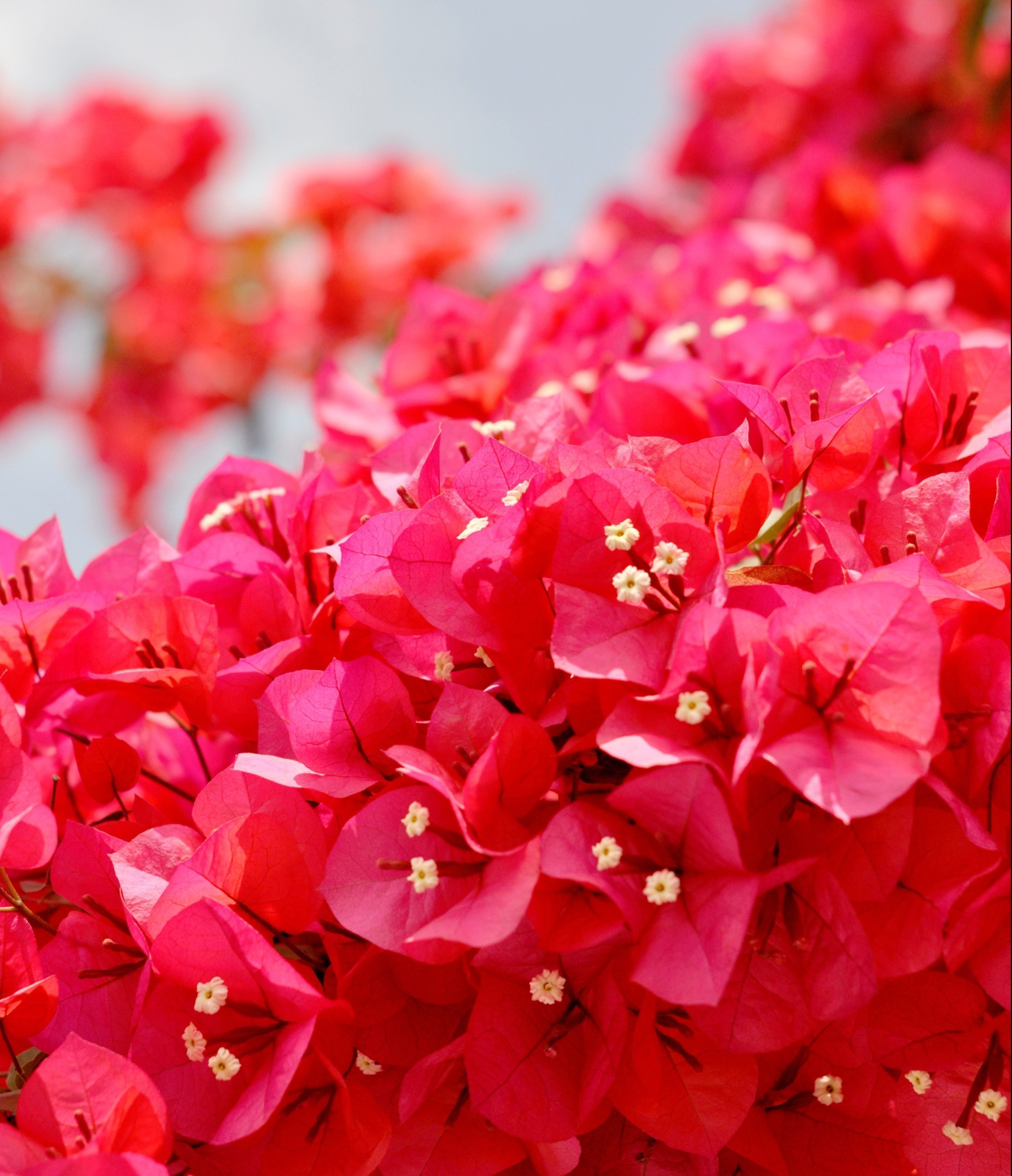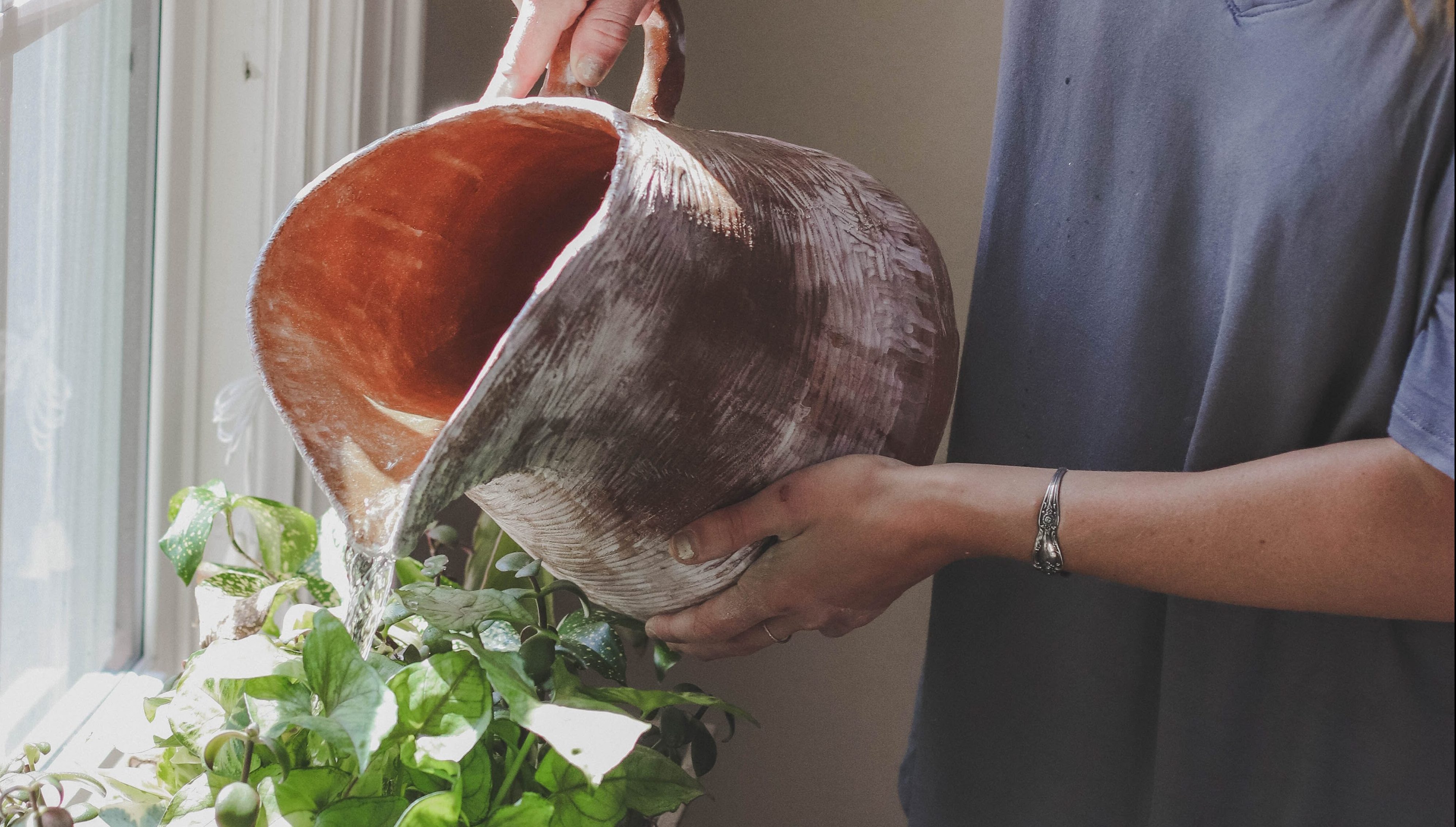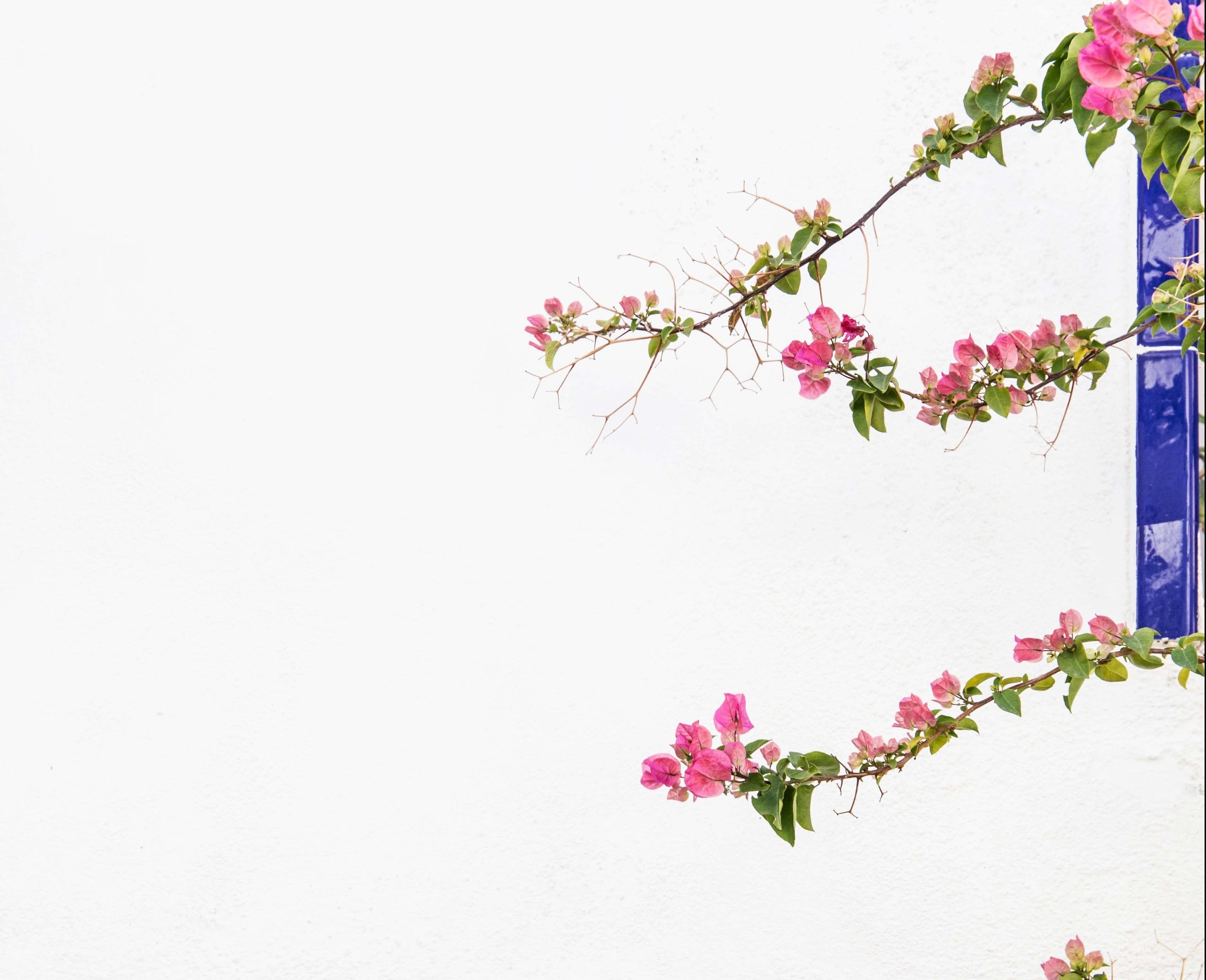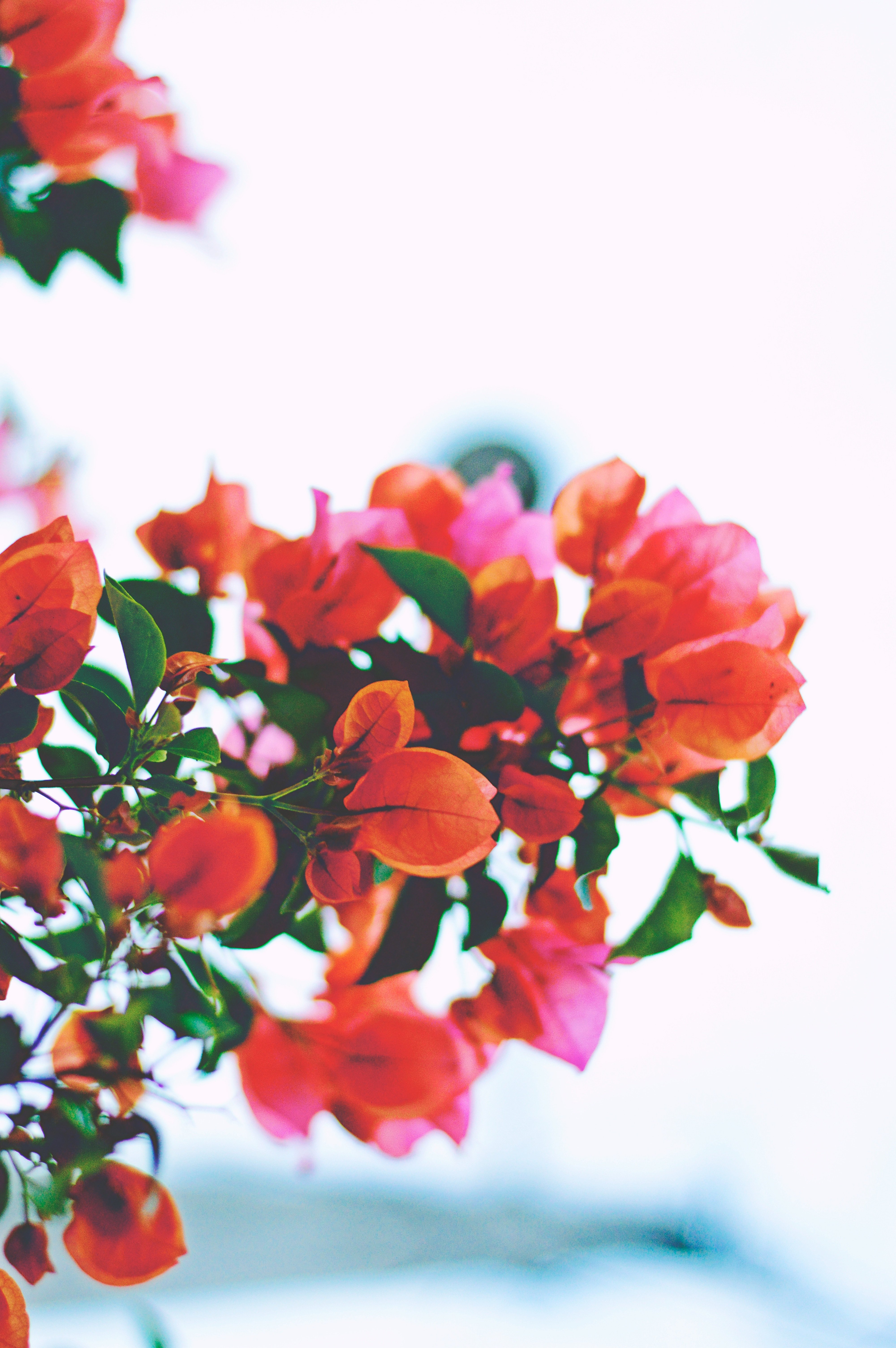It blooms in a variety of colors and enchants your apartment or even your balcony in a colorful atmosphere. The bougainvillea is not necessarily one of the low-maintenance houseplants, but it catches everyone’s eye with its powerful and unique flowers. No observer can walk past it without admiring it. To ensure that it also produces its beautiful flowers in your home, we will show you how to care for Bougainvillea in the best possible way.
Contents
- 1 The history of the Bougainvillea
- 2 The appearance of tropical bougainvillea
- 3 The right Bougainvillea location
- 4 Bougainvillea soil: it likes it permeable
- 5 Watering Bougainvillea: The plant needs a relatively large amount of water
- 6 Fertilizing Bougainvillea: Especially in the flowering period, this is very important.
- 7 Pruning Bougainvillea: Pruning is good for it
- 8 Repotting Bougainvillea: It is better not to plant too often in a new pot.
- 9 Bougainvillea propagation: Form your own flowering family
- 10 Is the bougainvillea poisonous?
- 11 Tips for problems with the bougainvillea
- 12 Flowering and evergreen beauties at home
- 13 Author
The history of the Bougainvillea
The Bougainvillea does not describe a plant in itself, but a whole plant genus with 10 to 18 different species. In our country, bougainvilleas are also called triplet flowers. The unusual and French-sounding name of the houseplant is due to the French navigator and circumnavigator Louis Antoine de Bougainville, who probably discovered the plant for the first time in the 18th/19th century. The tropical climbing shrub has its home in Ecuador and Brazil on a small area along the Andes.
The appearance of tropical bougainvillea
In the wild, bougainvilleas grow mainly in summer-dry forests. They belong to the climbing plants, but nevertheless they do not form special climbing organs, like other plants. On the contrary, they shimmy up to a height of five meters with their long shoots, which have light thorns. If the bougainvillea care is right, then your plants can bloom all summer in bright and vivid colors (white, yellow-orange, pink, purple, red). The name triplet flower comes from the fact that each flower forms three bracts that have a creamy white tubular flower in the center. When the plants bloom in their full glory in the summer, the pointed foliage leaves disappear almost completely beneath them. Because of their sensitivity to frost, they should be used either as container plants or as houseplants.

Bougainvillea care: It’s simple
For the right Bougainvillea care you should consider a few things. We will go through the most important things together with you.
The right Bougainvillea location
The Bougainvillea definitely needs enough sun at its location. Because in a half-shady and cool place, the plant forms much less flower buds. If you want to place the bougainvillea outside (from May when the sun’s rays are stronger), then make sure that the location is protected from rain and wind. In your apartment, for example, a bright heated conservatory is very suitable.
In the winter you should protect your plant from frost and therefore place it in a bright location in your apartment in the fall. It may lose its leaves, but this should not worry you, as they will sprout again in the spring.
Bougainvillea soil: it likes it permeable
For optimal bougainvillea care, the substrate should also be right. For this purpose, use structurally stable and permeable pot plant soil that has sufficient mineral content. If you add a little clay to the substrate, your plant will be very happy. The slightly acidic soil should ideally have a pH value between 6.0 and 6.5. Therefore, always look at the packaging of the potting soil beforehand. If the pH is not in this range, the bougainvillea will not be able to develop healthily.
Watering Bougainvillea: The plant needs a relatively large amount of water
Your flowering bougainvillea has a high water requirement. On very hot days, you should therefore provide it with water in the morning and in the evening. If the plant suffers from a lack of water, it will quickly lose its green leaves and stop growing.
Tip: Even though you should water the plant every day depending on the temperature, avoid waterlogging in the pot. This will lead to root rot if left for a long time. Therefore, make sure that the top layer of soil is slightly dry before the next watering.
In winter, the important resting phase of the bougainvillea, the water supply should be limited. Here it is important that the pot ball does not dry out completely.

Fertilizing Bougainvillea: Especially in the flowering period, this is very important.
Not only watering is important in bougainvillea care, but also fertilizing. From spring to late summer, your plant needs a phosphate-rich flowering plant liquid fertilizer every two weeks. You should always follow the manufacturer’s instructions regarding dosage. After the flowering period, you can stop the additional nutrient supply completely.
Pruning Bougainvillea: Pruning is good for it
Bougainvilleas are among the most pruning-friendly plants. Without pruning, they can develop meter-long shoots that are only weakly branched and bear flowers at their ends. Therefore, before the dormant period in winter or even before the next spring, you should cut them back vigorously. If you cut back the plant regularly, the leading shoots will grow vigorously in a few years and your bougainvillea will not need a climbing aid. In between you can of course always cut off withered inflorescences.
Tip: Cut only in the green and unwoody area.

Repotting Bougainvillea: It is better not to plant too often in a new pot.
When repotting, you should always make sure that the fresh substrate is also well-drained and has a low humus content. Make sure that the pot is not too big, otherwise the bougainvillea will put too much energy into leaves instead of flower growth. Every two to three years you can repot the plant after you have taken it out of the winter quarters. This will guarantee vigorous growth with beautiful colorful flowers.
Tip: If you add a layer of expanded clay to the bottom of the pot, the soil together with the plant pot will have an even better permeability.
Bougainvillea propagation: Form your own flowering family
As with many (indoor) plants, you can propagate the bougainvillea by cuttings. However, these are not very easy to root and you need to have a little patience. From the tendrils of the plant, cut about 30 centimeters long cuttings in the spring. The cut surface should be dipped in special rooting hormones (indolyl-butyric acid) for ideal rooting. Then plant the cuttings in a sand-peat mixture. The temperature in the bright location (without direct sunlight) should always be a steady 24 degrees Celsius. If everything goes well, then in the next eight to ten weeks the roots of the cuttings will grow and you can plant them in the usual pot plant soil that you also use for your adult bougainvilleas.

Is the bougainvillea poisonous?
This time you can be completely unconcerned, because the bougainvillea is not poisonous for humans and animals. So you don’t have to worry that your cat will get poisoning symptoms after eating it and you will have to take him to the vet. Neither the stem, the leaves nor the flowers contain any toxins, so it is safe to keep even in a household with small children.
Tips for problems with the bougainvillea
You are worried because your bougainvillea does not bloom. This is most likely due to very simple care mistakes. If the location is too bright or too dark, or the overwintering place does not have the right temperature, then your plant may not produce any or only very few flowers in the next flowering phase. Also a lack of nutrients or too frequent watering will harm your flowering houseplant. Exactly for these reasons, it is very important to observe the right things when caring for a Bougainvillea.
Flowering and evergreen beauties at home
Would you like to have more plants in your home to complete the blooming colorful picture of the Bougainvillea? Then take a look at our assortment. There you will find more inspiring beauties that are adapted to your home.









